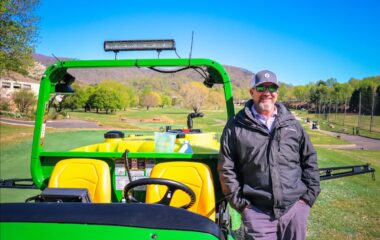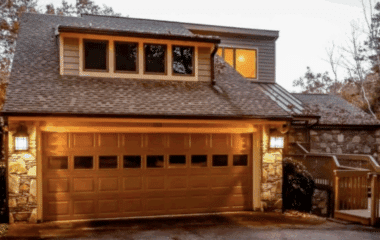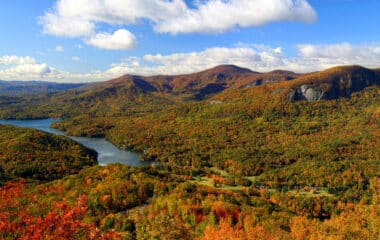By Rumbling Bald Golf Course Superintendent Lance Allen
In my years as a golf course superintendent, it’s become clear to me that golfers don’t understand why we make tough decisions about frost and freezing conditions in the late fall and winter. I hope this article helps people understand the differences between these conditions and how we combat them, ensuring the course is in the best possible shape in the spring and early summer.
Frost is water vapor in an above-freezing atmosphere that encounters a surface that is below freezing and changes from water to ice. When you see frost, it means the grass blades, the plant crown, and the water in the plant are below freezing. We delay golf on frosty mornings because any traffic in these areas compresses the plant and allows the ice (expanded water) to slice or break through the cell wall, causing severe damage to the plant. Frost is a short-term weather condition that is inconvenient for golfers and course staff, but it is imperative for maintaining healthy grass and good playing surfaces in the spring and summer.
Green covers are an entirely different animal and are vital for warm-season turf survival in the cold months in the Southeast. We will never use covers to keep the frost from lying on the grass, but we will put them on before winter weather events, which helps combat winter damage that could occur on turf exposed to prolonged cold. These strong cold fronts bring rain/snow, high winds, and frigid temperatures, with the potential for the conditions to persist for multiple days afterward. Green covers create an environment around the turf that drastically alters the temperature and moisture beneath them compared to the surrounding air. In simple terms, it is warm and moist underneath the protective layer compared to the surrounding climate. Covers are permeable to a point but do wonders at protecting against moisture loss from high winds and low humidity, and at helping keep the turf properly hydrated for multiple days while covered.
At Rumbling Bald, we have both warm- and cool-season turf on our green surfaces, which require different levels of attention and maintenance depending on the season. We have already begun raising heights on the ‘Champion’ bermudagrass at Apple Valley Golf Course and will continue until it goes dormant in November and December. If we need to cover greens at Apple Valley during these months, we can do so without any last-minute cancellations on the tee sheet. After the greens go dormant, we will close Apple Valley in January and February and direct all play to Bald Mountain Golf Course, which has Dominant Plus bentgrass, a cool-season grass. We may have to endure frost delays at Bald Mountain during January and February, but once it warms up in the late morning, there is always a place to play golf at Rumbling Bald on Lake Lure.








